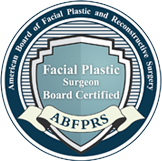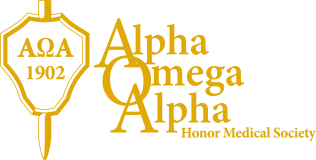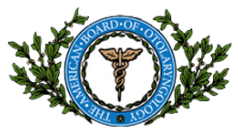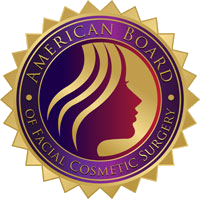Top 7 Causes of Nasal Obstruction You Shouldn’t Ignore

Chronic nasal blockage is more than a hassle. It can drain your energy, disturb your sleep, and affect your health long-term. If you’re breathing through your mouth most days or waking up tired, there may be more going on than seasonal congestion. This article outlines seven of the most common causes and explains why expert care is worth considering.
What Is Nasal Obstruction and Why It Matters
Nasal obstruction means you cannot breathe properly through your nose. It is not the same as a stuffy nose from a cold.
Common symptoms include:
- Persistent mouth breathing
- Dry throat after sleeping
- Feeling of pressure in the face or head
- Noisy breathing at night
- Interrupted sleep patterns
These signs are often overlooked. Many people assume it will pass, but ongoing blockage may point to an anatomical or chronic issue. Addressing it early can help prevent complications and restore one’s ability to breathe easily.
7 Common Causes of Chronic Nasal Blockage
If nasal congestion keeps showing up—no matter the season or cold status—it may point to an underlying issue. These seven conditions are some of the most frequent culprits behind long-term nasal obstruction.
Deviated Nasal Septum
The septum is the wall separating the nose’s left and right sides. When it’s off-center or bent, it can block airflow on one or both sides. This misalignment may cause you to rely more on mouth breathing, especially at night.
A deviated septum is one of the most common causes of structural nasal obstruction. If medications don’t help and you notice uneven airflow or frequent sinus pressure, septoplasty may be recommended.
Enlarged Turbinates (Turbinate Hypertrophy)
Turbinates are soft tissues inside the nose that help clean and humidify air. They can swell due to allergies, irritants, or chronic inflammation, making it difficult for air to pass through.
This condition, known as turbinate hypertrophy, may not improve with over-the-counter sprays or pills. In cases where symptoms linger, turbinate reduction procedures may restore better breathing.
Nasal Valve Collapse
The nasal valve is the narrowest part of the nasal airway. When a nasal valve collapses, airflow drops—especially during deep breaths, exercise, or sleep.
Patients often describe this as a feeling of their nose “caving in.” For some, the solution may be functional rhinoplasty to reinforce or support the nasal walls.
Chronic Sinusitis or Blocked Sinus Openings
Chronic inflammation of the sinus lining can trap mucus and restrict breathing. Over time, this creates pressure and discomfort around the cheeks, eyes, and forehead.
People with frequent sinus infections may benefit from balloon sinuplasty, a minimally invasive treatment that widens sinus openings and helps drainage.
Nasal Polyps or Growths
Polyps are soft, jelly-like growths inside the nasal passages or sinuses. They can block airflow and affect your sense of smell.
Though not usually painful, they often cause long-term congestion. Nasal sprays may shrink them, but surgical removal is sometimes the most effective option, especially if polyps recur.
Allergic Rhinitis and Environmental Irritants
Ongoing exposure to allergens like dust, pollen, and pet dander can trigger nasal swelling. This reaction, often diagnosed as allergic rhinitis, leads to sneezing, dripping, and congestion.
If allergy treatments don’t provide relief, an ENT can evaluate whether structural issues or chronic inflammation are also present.
Post-Surgical or Traumatic Nasal Changes
Previous trauma or nasal surgery may lead to scar tissue, cartilage damage, or changes in nasal shape. These alterations may narrow the airways or reduce airflow efficiency over time.
If you have a history of injury or prior rhinoplasty and now experience increased nasal blockage, a follow-up evaluation may help determine if revision surgery is needed.
Treatments That Can Help Restore Your Breathing
There is no one-size-fits-all solution for nasal obstruction. Some patients improve with medication, and others need procedures to correct deeper structural issues. Our practice offers medical and surgical options based on the exact cause of the problem.
Medical Treatments for Nasal Blockage
If your nasal obstruction is tied to inflammation or allergies, conservative treatment may work well. This includes:
- Antihistamines for allergy control
- Nasal corticosteroid sprays to reduce swelling
- Decongestants for short-term relief
- Immunotherapy (allergy shots) for long-term control
These are often the first steps for managing allergic rhinitis or mild sinus congestion. If symptoms persist after several weeks, further evaluation is recommended.
Minimally Invasive Options
For patients with chronic sinusitis or blocked drainage pathways, balloon sinuplasty is often a helpful next step. A small balloon is inserted into the sinus openings and inflated to expand the passageway gently. It is done under local anesthesia and typically requires little downtime.
Balloon sinuplasty can be a strong option for those who want to avoid traditional sinus surgery but need more than medication.
Surgical Procedures for Structural Problems
Surgery may be needed to fix the airflow when physical blockages are involved—like a deviated septum, turbinate hypertrophy, or nasal valve collapse. Common procedures include:
- Septoplasty – Straightens the nasal septum to allow better breathing
- Turbinate Reduction – Shrinks enlarged turbinates that are taking up airway space
- Functional Rhinoplasty – Repairs or supports nasal structures without focusing on cosmetic changes
Depending on the patient’s needs, these surgeries can often be performed under twilight sedation or general anesthesia. Dr. Rachel helps patients choose a treatment plan that fits their anatomy, symptoms, and recovery goals.
When to See a Nasal Specialist in Chicago
It’s easy to ignore nasal congestion until it affects how you sleep, breathe, or function daily. If your nose feels blocked more often than clear, it may be time to consult an ENT specialist.
Red flags that suggest you should seek professional care include:
- Nasal congestion lasting longer than three weeks
- Mouth breathing during the day or while sleeping
- Frequent sinus pressure or facial discomfort
- Snoring that disrupts your or your partner’s sleep
- Reduced sense of smell or taste
- Trouble breathing during physical activity
If you’ve already tried over-the-counter medications without lasting relief, there may be an anatomical issue behind your symptoms.
Why Choose MetropolitanMD?
MetropolitanMD is a leading Chicago practice specializing in cosmetic and functional facial procedures. Our team treats nasal obstruction with an expert understanding of airway anatomy and aesthetic balance. Led by quadruple board-certified surgeon Dr. John D. Rachel, MetropolitanMD blends advanced technology with personalized care.
At our practice, every treatment is planned with precision and purpose. Our certified surgical center meets the highest standards for safety and comfort. With locations in Chicago and Glenview, MetropolitanMD helps patients breathe easier, sleep better, and live more fully—with solutions that address the real root of the problem.
Breathe Freely Again—Start with a Consultation
Take the next step with MetropolitanMD. Schedule your consultation online or call our office to discuss personalized treatment for nasal obstruction. Relief starts here.








